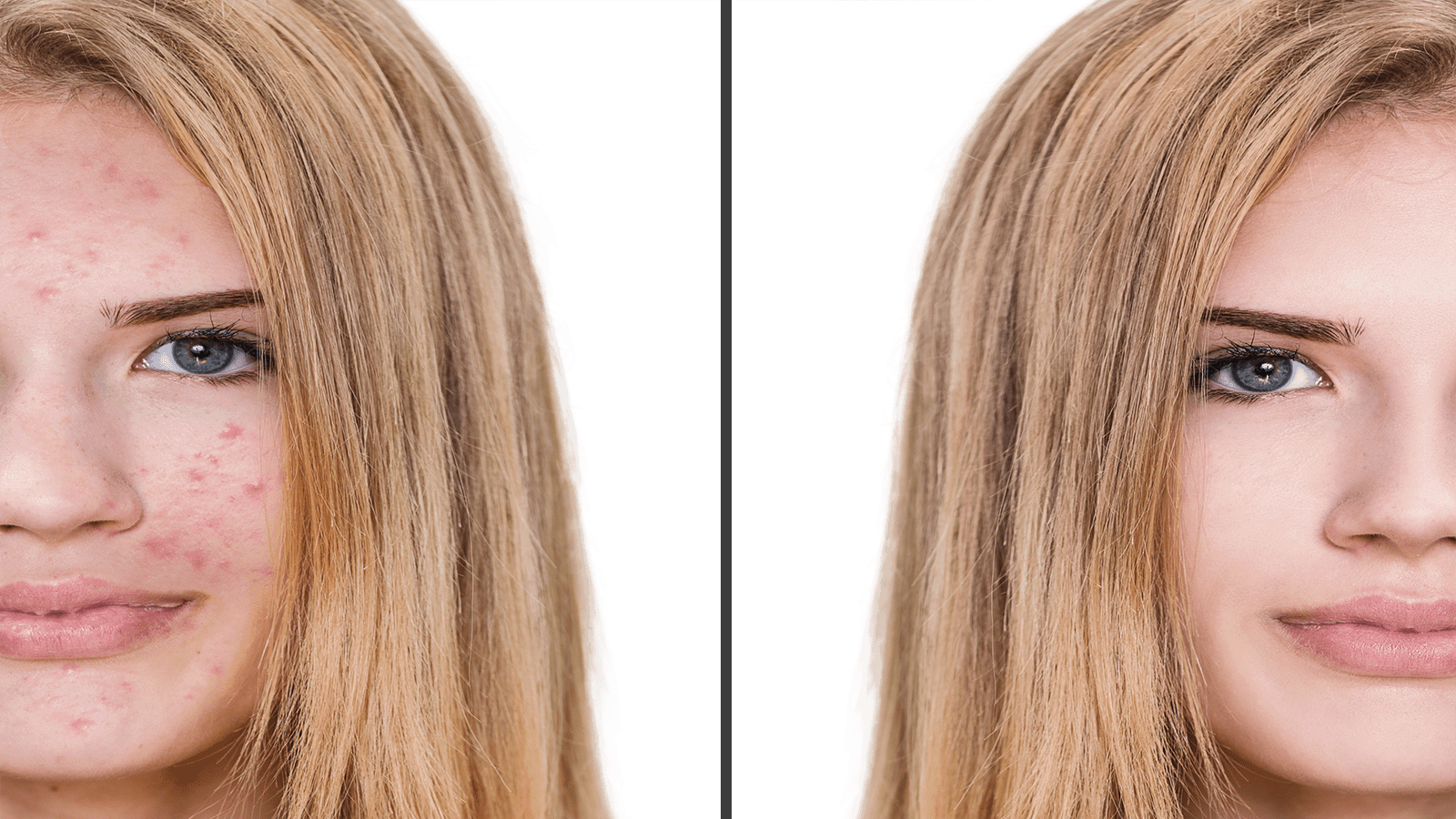Acne scars are painful to live with, physically and emotionally, says anyone who has them. Anyone who has ever suffered from severe acne, particularly cystic acne, knows how unsightly and disheartening acne scars can be. This frustrating skin issue varies in shape and size, but it ultimately comes from the same cause–inflamed or infected pimples.
What Causes Acne Scars?
Acne scars occur when the skin is damaged due to severe or persistent acne. As the skin heals, collagen is produced to repair the damage, but if too much collagen is produced, it can form raised or scars. If too little collagen is produced, it can result in depressed or dimpled scars.
Hormonal changes, genetics, and skin irritation are some of the factors that can increase the risk of developing acne scars. People with oily skin or who pick or pop pimples are also at a higher risk of developing scars.
Acne scars can also come from inflamed skin lesions, such as pimples, cysts, or pustules. The more inflamed the pimple is, the more likely a scar will form. Unfortunately, the scars often form as the body attempts to repair damage to the skin, but there are ways you can minimize this scarring.
Prevention
- The best way to prevent future scarring is early treatment. If your skin doesn’t seem to respond to any over-the-counter treatments, see your doctor as soon as possible.
- Choose cleansers, toners, and exfoliants that meet your individual skin needs. Don’t irritate already inflamed skin by using harsh scrubs or cleansers.
- Don’t pop or pick at your pimples or scabs. Doing so can make the lesion more inflamed and increase the likelihood of scarring.
If you already have scars, all hope is not lost, but remember that the most effective treatment for acne scars varies by type.
Types of Scars
Take a moment to examine your acne scars. Are they raised above the skin or craggy? The four main types of acne scars are ice pick, boxcar, rolling, and raised.
- Ice pick scars are deep, column-like scars that often resemble large, open pores.
- Boxcar scars cause round or oval depressions that lead to uneven skin texture.
- Rolling scars are similar to boxcar scars, except that they don’t have a well-defined shape. They are often deep depressions within the skin with a rough surface.
- Raised scars are firm masses of scar tissue raised above the skin’s surface.
Permanent Acne Scars Treatment
Laser Treatments
Laser resurfacing treatments are perhaps the most effective way to remove scars permanently. During these treatments, a dermatologist burns away the damaged skin with a laser to encourage new skin growth. These treatments are expensive, usually between $4,000 and $8,000, but they give you smooth, beautiful skin. This treatment works best for boxcars and ice-pick scars.
Excisions
During a punch excision, the dermatologist physically removes a scar with a small punch tool. This treatment is best for moderate to severe scarring of the ice pick type, especially when paired with other treatments.
Fillers
Dermal fillers are injectable treatments dermatologists might utilize to fill in facial depressions with an FDA-approved substance that plumps up the desired area, such as hollows under the eyes or a deep scar. For acne scars, dermal fillers are a permanent way to treat rolling scars.
Silicone Treatments
These over-the-counter products flatten raised scars over time. Silicone treatments come in gels, creams, and bandage tapes, which are non-invasive and inexpensive. Over-the-counter silicone treatments work best for mild, raised scarring. The American Academy of Dermatology found that silicone gels flattened raised scars after about six months of continuous use. A silicone product is not a permanent acne scars treatment for moderate or severe scarring. These treatments can only minimize them.
Brightening Serums
Hyper-pigmentation is another result of moderate or severe acne. These dark or red spots occur when the skin produces too much melanin after the skin has healed from the lesion. Skin-brightening serums are an effective way to treat hyperpigmentation. These treatments can be both prescribed or over-the-counter and often contain retinoids (a synthetic form of vitamin A), niacinamide (a synthetic form of vitamin B3), or ascorbic acid (vitamin C).
Chemical Peels
Chemical peels are mixtures of various chemical concentrates that are applied to the face for some time to slough off the first layers of the skin. Similar to brightening serums, these treatments can be either prescribed or over the counter. Three common chemical peels are phenol peels, glycolic acid peels, and trichloracetic acid peels. Certain types of scars benefit from specific peels. Phenol peels work best for rolling and ice-pick scars, whereas glycolic acid peels tend to work best for hyperpigmentation.
Exfoliation and Dermabrasion
While gentle exfoliation at home can help with skin texture and brightness, it will not permanently remove your scars. Because the scars are deep within the skin’s tissues, dermabrasion and microdermabrasion are the most effective exfoliation treatments for scarring. In both dermabrasion and microdermabrasion, abrasive materials sand down the outer layers of the skin, which effectively shed them and resurface them. Dermabrasion is best for fair skin, whereas microdermabrasion is recommended for darker skin tones.
Final Thoughts on Acne Scars
Acne scars can be physically painful as well as damaging to your self-confidence. Fortunately, you do not need to live with this skin damage; you can try a range of home remedies and dermatological treatments to reverse the scarring and look great again.
















 Community
Community

